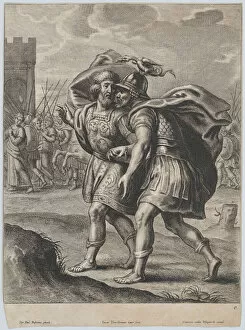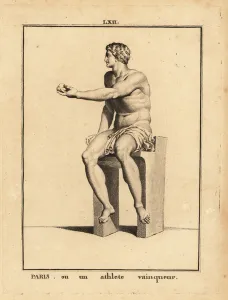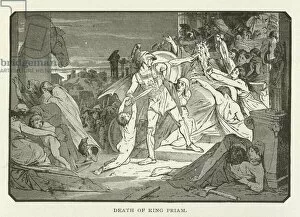King Priam Collection
"King Priam: The Tragic Figure of Troy's Fall" In the captivating artwork "Achilles and Priam, in conversation outside of Troy
All Professionally Made to Order for Quick Shipping
"King Priam: The Tragic Figure of Troy's Fall" In the captivating artwork "Achilles and Priam, in conversation outside of Troy, " we witness a poignant exchange between two legendary figures. King Priam, the ruler of Troy, seeks Achilles' mercy to retrieve his son Hector's body. This scene captures the desperation and vulnerability of a once-mighty king. The statue of Paris, another son and Queen Hecuba, stands as a reminder of the Trojan prince whose actions ignited the devastating Trojan War. Whether seen as an emblematic figure or victorious athlete, it symbolizes both glory and tragedy within this royal lineage. Giovanni David's painting "The Sacrifice of Polyxena" depicts one more heart-wrenching moment for King Priam. As he mourns his daughter's sacrifice at Achilles' tomb during the fall of Troy, we witness his profound grief and helplessness in protecting those he loves. In Pierre Lombart's engraving "The Sack of Troy-Pyrrhus Killing Priam, " we are confronted with the brutal reality that even kings cannot escape their fate. It portrays Pyrrhus mercilessly slaying King Priam amidst chaos and destruction—a haunting depiction that encapsulates the tragic end to an era. "Priam and his Family Mourning the Death of Hector" showcases yet another sorrowful chapter in this family's story. With faces etched with anguish, they grieve over Hector’s lifeless body—an image that evokes empathy for their immense loss. "The Funeral of Hector" immortalizes one final farewell to Troy’s greatest warrior. Unknown artist beautifully captures not only grieving but also honors Hector’s heroism through solemn rituals—a testament to how deeply rooted honor is within King Priam’s dynasty. Padovanino brings us back to where it all began—the encounter between Achilles and King Priam—in their painting "Priam and Achilles.















